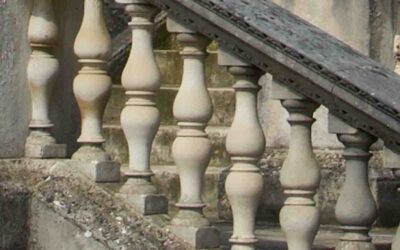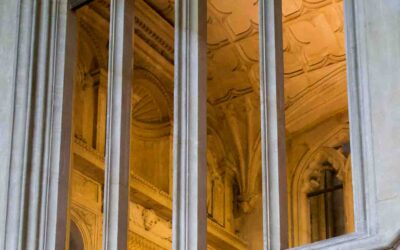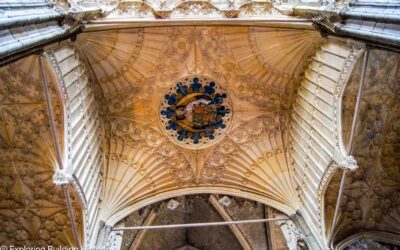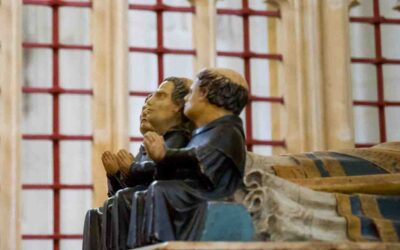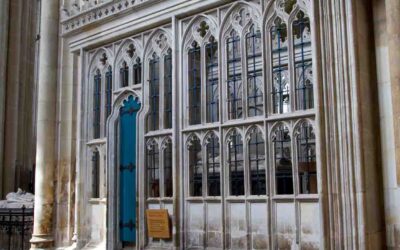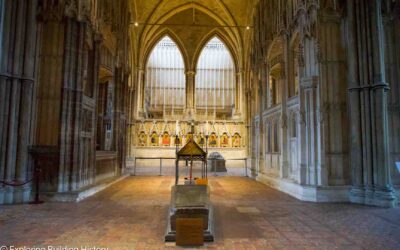PALLADIAN BALUSTRADES: A 16th Century Quiet Revolution in Architecture
I have a bit of a thing about balusters and balustrades. The ones we are familiar with today came about in the Renaissance and were eagerly adopted by the builders of country houses and other monumental buildings in England. They are part of the ‘neo-classical...
Grand Tour of Winchester Part X: 200 Years of Cage Chantries: 16th Century Gothic & Renaissance: Bishop Fox (d. 1528) & Bishop Gardinder (d. 1555)
Chantries of Bishop Richard Fox & Bishop Stephen Gardiner Flanking the old shrine of St Swithin and the feretory platform at Winchester are two chantries belonging to the first half of the 16th Century. One displays the height of mastery of the late Perpendicular...
Grand Tour of Winchester Part IX: Twin Chantries of late 15th Century: Cardinal Henry Beaufort (d. 1447) and Bishop William Waynflete (d. 1486)
The two 15th century chantries that flank the shrine of St Swithun at Winchester are an exuberant expression of stone masons’ skills at the height of Perpendicular architecture. Years as Bishop Location of Chantry 1 Cardinal Henry Beaufort 1405-1447 S side of later...
Grand Tour of Winchester Part VIII: Bringing the Perpendicular to Winchester: Bishop William Edington (d. 1366) & Bishop William Wykeham (d. 1404)
Royal masons working at Winchester in the 1360s developed the ‘cage’ chantry.[i] The earliest free-standing ‘cage’ chantries in England are the two built in the nave of the cathedral. They were built for Bishop William Edington and Bishop William Wykeham. Years as...
Grand Tour of Winchester Part VII: 200 Years of The Cage Chantry
In Winchester Cathedral are six free-standing chantries dating from the mid-14th C to the mid-16th C. They provide an interesting comparison of Perpendicular micro-architecture over two hundred years, demonstrating the innovative and master accomplishment of medieval...
Grand Tour of Winchester Part VI: The Cathedral Retrochoir & Chantries
To describe the architecture of a cathedral is a significant task and perhaps ends up as dry facts. At Winchester the magnificent nave, choir, chancel or sanctuary are a wonder to behold and experiencing the space is an aim in itself. What I thought perhaps to bring...
Exploring Building History
Exploring Building History is a non-commercial site. It is my own personal musings on architectural history. There is wealth of built heritage in England, and as I explore and think about what I see, I post my reflections on this site.

